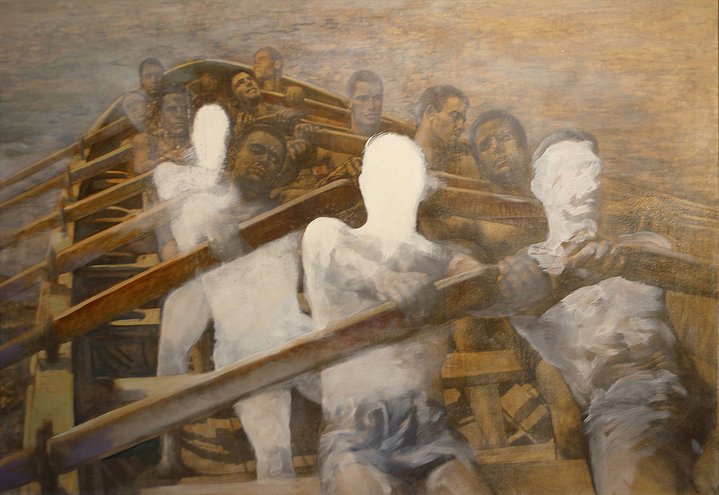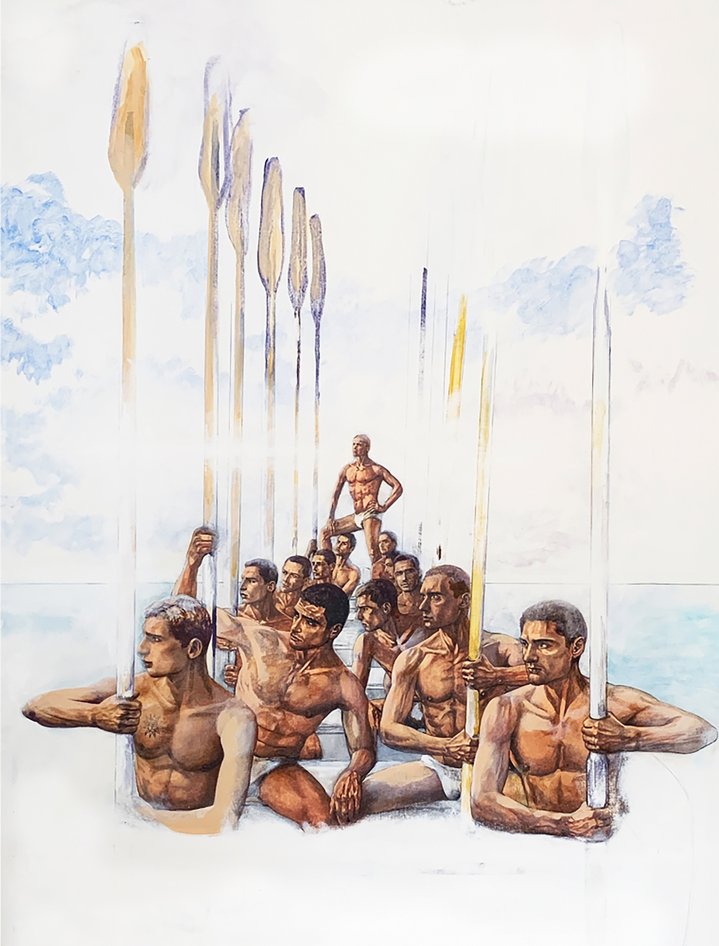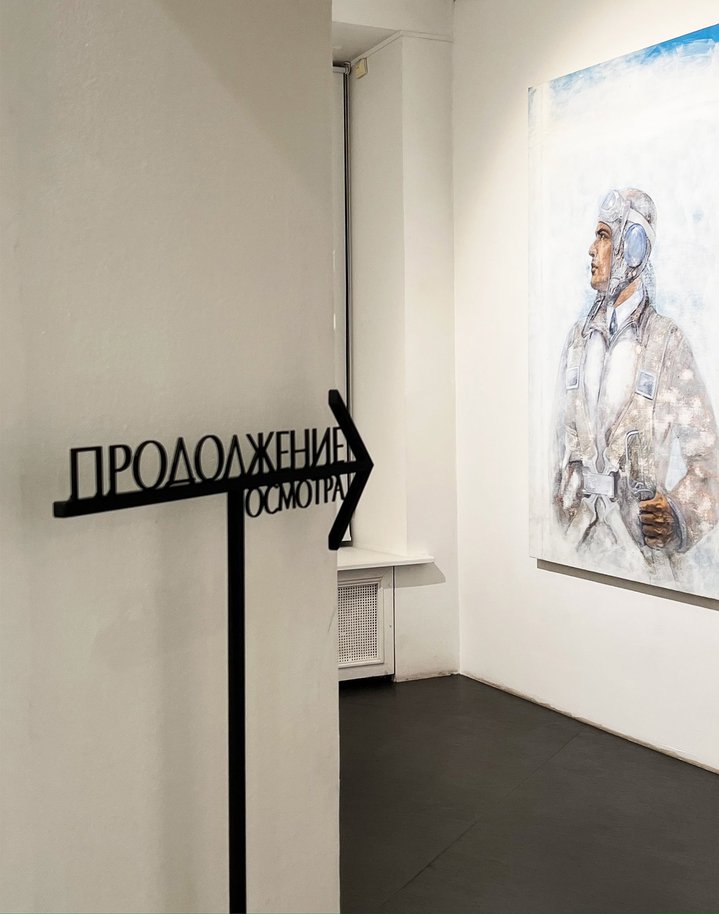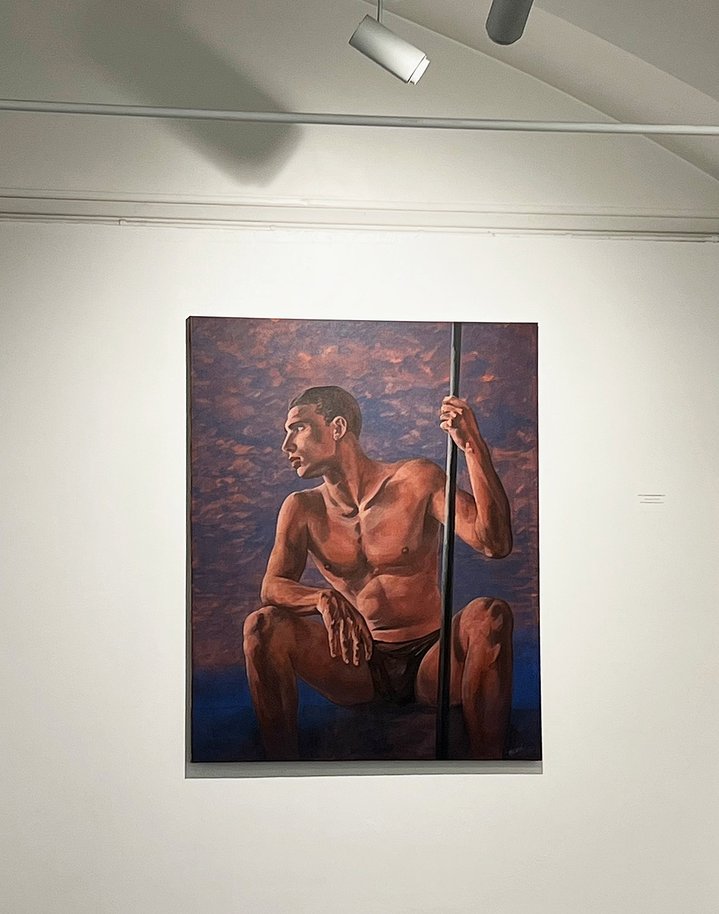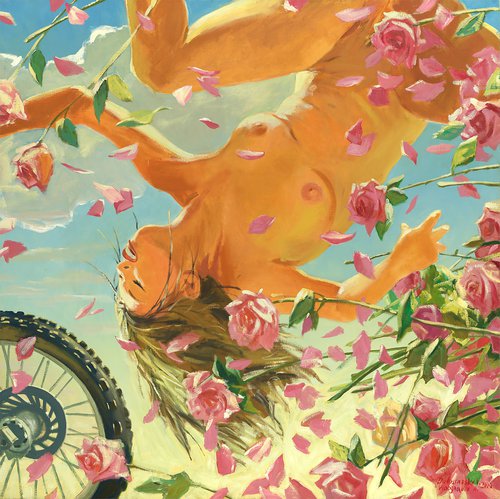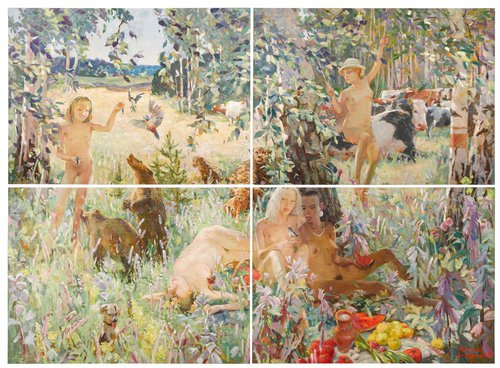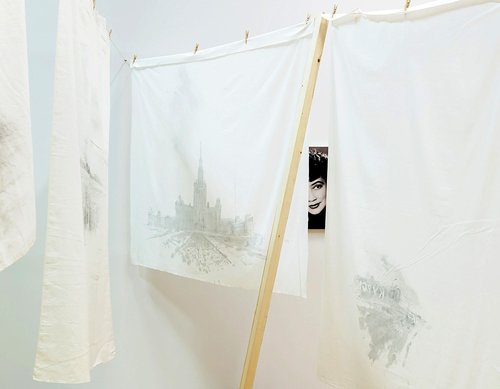Where shall we sail? Georgy Guryanov exhibition at the K Gallery
Georgy Guryanov: the drummer boy
An exhibition at the K Gallery in St Petersburg pays tribute to late artist and musician Georgy Guryanov, once a legend of the city’s underground scene and later a self-proclaimed classic.
The late eighties and early nineties in Russia were a turbulent time of perestroika, the fall of Soviet socialism, economic collapse and extreme poverty. But they were heady times when the underground was breaking out in the open stage. The bans and laws of Soviet censorship had already crumbled and new ones had yet to be written. And the art world threw itself enthusiastically into a turbulent sea of discovery. One of the heroes of this era was Georgy Guryanov (1961–2013), a talented musician from the cult rock band Kino and a contemporary painter with a cool aesethetic.
Guryanov was born in Leningrad into a family of geologists. Even before he went to school, he had learnt to play on various instruments: a balalaika, a domra, the piano, the guitar. As he himself once said, “I fell in love with Led Zeppelin as a child, and because of them I joined a music club.” At the same time, he had always wanted to pursue art: he graduated from a preparatory art school and later enrolled in the Leningrad Art School, but dropped out after one year. The Soviet education system did not suit him, so he turned to music. Many people in Russia today think of Kino as a ‘neo-romantic’ band, but their leader Victor Tsoi (1962–1990) and personally Guryanov started out in punk culture. This is where Kino broke away from other Russian bands, who had copied Western hard rock. Kino was more oriented towards the new sounds of post punk and preferred ‘The Cure’ and ‘The Smiths’. Critics even noted similar harmonies and arrangements, but nobody questioned the original talent of Victor Tsoi as a songwriter. His music is still popular in Russia today, even though new fans were born after his untimely death in a car crash in 1990, sealing his fate as ‘a rock'n'roll hero in an unrhythmic country’.
Guryanov met Tsoi in the early eighties and soon became a regular member of Kino. His style on stage was quite eccentric, he played the drums standing up, producing a clear rhythm, surprisingly similar to an electronic drum-machine. But it was exactly the sound the band needed and lacking good quality musical instruments or professional studios they achieved an extraordinary sound! Unfortunately, after Viktor Tsoi's death the band fell apart. From the end of 1980s Guryanov travelled a lot, living for a time in Berlin, London, Madrid and Cadaques (where he studied Spanish). However, he never abandoned St Petersburg. At the end of the 1980s he became interested in Techno and House music as well as clubbing, and organized the first rave parties in St Petersburg and Moscow. One of them, the Gagarin Party in Moscow went down in the history of the Russian rave movement.
Timur Novikov (1958-2002), an artist and influencer from St Petersburg, played a special role in Guryanov’s development as an artist. In the early eighties, he brought Victor Tsoi and Georgy Guryanov into the circle of influence of the ‘New Artists’ group, which focused on a wide range of historical movements including primitivism, expressionism, the Russian avant-garde of the 1920s and 1930s, French La Figuration Libre, German ‘New Wild’ and American Pop Art. However, in the early nineties, Timur Novikov suddenly changed direction and boldly announced a return to neo-classicism by organizing the New Academy of Fine Arts. To a certain extent, this was a game of ‘new officialism’. Neo-académist artists were given the title of “honorary professors”, but for Timur Novikov, this was also a principled gesture of resistance to the uncritical (and often formal) imposition of Western contemporary art in Russia, which had in its bureaucracy replaced Soviet Socialist Realism. Already back in 1991, the Russian Museum opened an exhibition in the Marble Palace called ‘Academism and Neo-Academism’, featuring Guryanov's new neo-academic canvases. From this moment on he decisively changed his look and his friends started to call him the St. Petersburg Dandy. In 1993 the Russian Museum staged his solo exhibition. And in 1998 a significant event happened: Georgy Guryanov’s painting ‘The Rowers’ was chosen as the poster for the gay Olympics in Amsterdam.
From 1991 until the end of his life Guryanov's works were dominated by dynamic sporting subjects. He found inspiration in sporting photos from the 1920s-30s by avant-garde photographers such as Alexander Rodchenko (1891–1956), Boris Ignatovich (1899–1976) and Arkady Shaikhet (1898–1959). Film was another source of inspiration such as Abram Room's The Strict Young Man (1935) and Leni Riefenstahl's Olympia (1936). But he was certainly not drawn into the pathos of totalitarian art. He was concerned above all with aesthetics, which he tried to separate from ideology. He often portrayed himself and his closest friends as sportsmen and sailors. And his painting technique itself, in which he combined pencil drawing and painted using numerous layers of glaze, he erased the image of ‘everyman from the masses’ with each new layer, making anonymous characters from the crowd into a concrete and familiar person.
The title of Georgy Guryanov's exhibition at the K Gallery in St Petersburg, ‘Where shall we sail?’ refers to a line from Pushkin's famous poem ‘Autumn’, but also questions today's Russia, where confusion and uncertainty about the future prevail, and where lawmakers are writing gay culture off as a criminal offence. The exhibition is curated by Arkady Ippolitov, an eminent art historian from the State Hermitage Museum, who personally knew the artist and came up with his own ideas about how to show Guryanov's paintings to audiences today. The exhibition deliberately includes a number of unfinished canvases, revealing his process of creation and Guryanov's perfectionism as an artist. Georgy Guryanov passed away in 2013 and today his work is hard to find in Russia, much of it in private collections and abroad. The gallery has published the most comprehensive album of his work to date in a bid to lay down his legacy. And it is accompanied by a lively and detailed text by Arkady Ippolitov. Today it has become part of the history of Russian art.






